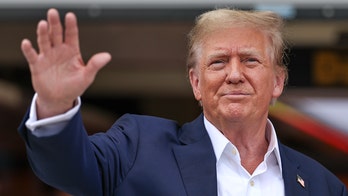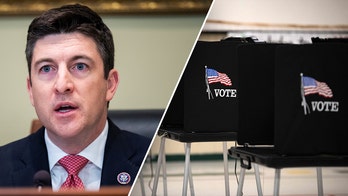The actual Cap, Cut and Balance legislation that House Republicans will put on the floor next week is still being written. But here are some general provisions of it.
In short, the legislation puts concrete caps on federal spending, tying it to a percentage of Gross Domestic Product. This is different than the Senate version of this bill, which distributes the cuts into six distinct spending buckets. For instance, the Senate legislation would make specific dollar cuts to a policy area, like defense. This just limits the percentage for each year and allows that Congress to determine what the individual cuts should be across all areas.
Secondly, a source familiar with the legislation tells FOX News the bill makes no immediate changes to major entitlements such as Social Security, Medicare and Medicaid. The bill also slashes total spending by $111 billion in the first year.
Next, is the interesting part on the balanced budget amendment.
The bill would agree to raise the debt ceiling by $2.4 trillion to a grand total of $16.7 trillion, but only after "A balanced budget amendment to the Constitution or similar amendments" are transmitted to the states by the Archivist of the United States. In other words, it must first pass both bodies of Congress, but not yet officially amend the Constitution.
Cut, Cap and Balance does not specifically call for the balanced budget amendment crafted by Rep. Bob Goodlatte (R-VA). But it does call for the Congressional approval of a Balanced Budget Amendment that does the following
1) Ensures that outlays do not exceed receipts.2) Has "a" spending limitation as a percentage of GDP (nothing concrete there)3) Imposes a supermajority to raise taxes.
Only after both houses of Congress approve a balanced budget amendment will the debt ceiling called for in this bill kick in.
Cut, Cap and Balance is expected to be on the floor Tuesday.
Below are some more details:
What are the details of the Balanced Budget Amendment? The legislation would require that any Balanced Budget Amendment include the following:
1. A balanced budget component;2. A super-majority requirement to raise taxes; and3. A limit on spending as a percentage of GDP.
What is the process for the debt ceiling being increased? Provides for the President's request for a debt ceiling increase if a Balanced Budget Amendment passes Congress and is sent to the states for ratification.
Why $2.4 trillion debt ceiling increase? The President has requested that the debt limit increase by this amount. This amount is less than the amount of the spending cuts in this bill. A debt limit increase of this magnitude is a major sacrifice on the part of House Republicans, which is why it is made contingent on measures to ensure that the federal budget is permanently under control.




